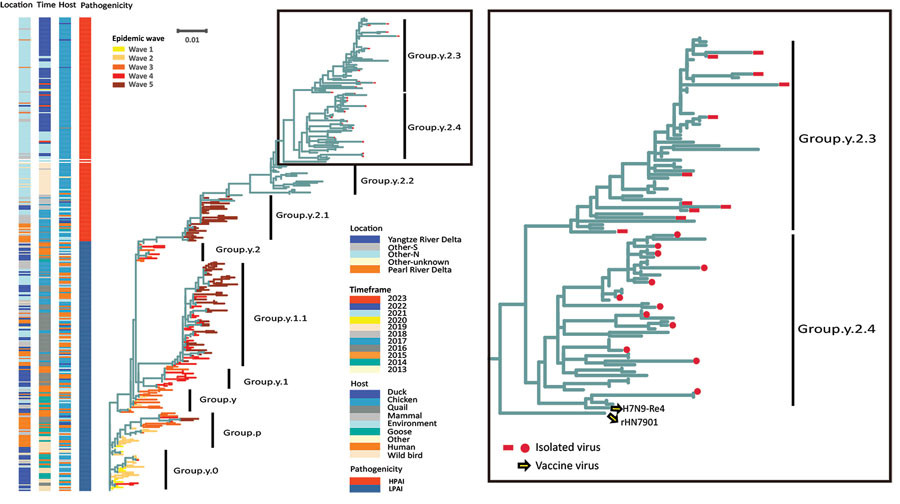Disclaimer: Early release articles are not considered as final versions. Any changes will be reflected in the online version in the month the article is officially released.
Volume 30, Number 6—June 2024
Dispatch
Evolution and Antigenic Differentiation of Avian Influenza A(H7N9) Virus, China
Figure 1

Figure 1. Phylogenetic analysis of evolution and antigenic differentiation of avian influenza A(H7N9) virus, China. Colors in columns at left show locations, timeframes, hosts, and pathogenicity of virus strains. The maximum-likelihood phylogenetic tree of the hemagglutinin gene depicts viruses corresponding to epidemic waves 1–5. Tree on right shows detail of Group.y.2.3 (red rectangles) and Group.y.2.4.4 (red circles) in comparison with vaccine strains. Scale bar indicates nucleotide substitutions per site. LPAI, low-pathogenicity avian influenza; HPAI, highly pathogenic avian influenza; Other-N, sites in the northern region; Other-S, sites in the southern region.
1These first authors contributed equally to this article.